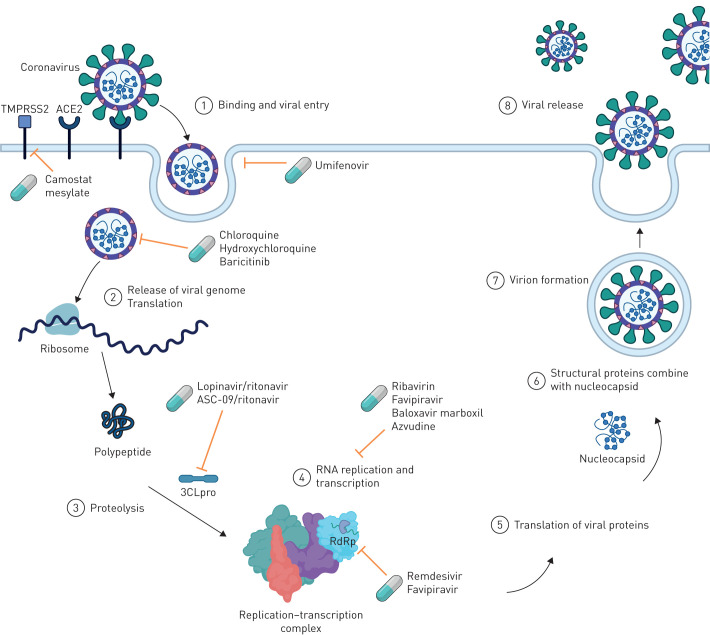FIGURE 2.
Proposed mechanism of action of drugs used for severe acute respiratory syndrome coronavirus 2 (SARS-CoV-2). SARS-CoV-2 can enter the cell through angiotensin-converting enzyme 2 (ACE2) and type II transmembrane serine protease (TMPRSS2). Camostat mesylate acts as an inhibitor of TMPRSS2 and umifenovir can inhibit the viral entry to the cell [180, 228, 229]. Chloroquine, hydroxychloroquine and baricitinib mechanisms of action are not fully understood; however, it is proposed that these drugs affect viral entry. Baricitinib also inhibits the AP-2-associated protein kinase [173, 180, 230]. Lopinavir/ritonavir and ASC-09/ritonavir as protease inhibitors inhibit the proteolysis. Lopinavir/ritonavir inhibits specifically the proteinase 3CLpro [231]. Ribavirin and favipiravir both have wide antiviral activity and have the potential to inhibit SARS-CoV-2 RNA replication [232–234]. Azvudine, a nucleoside reverse transcriptase inhibitor, also inhibits RNA replication [235]. A probable mechanism of action for baloxavir marboxil is the inhibition of transcription through inhibiting cap-dependent endonuclease [236]. Favipiravir and remdesivir inhibit the RNA-dependent RNA polymerase (RdRp), which results in reduced RNA synthesis [180, 233, 234, 237]. Adapted from “Coronavirus Replication Cycle” (2020; https://app.biorender.com/biorender-templates).

